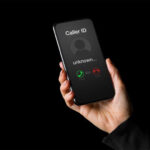iPhones are well-known for security, but the Apple ecosystem isn’t impervious. If you’ve ever encountered an odd pop-up message saying “Your iPhone has a virus!” or observed your device acting strangely, you might start searching for how to remove virus from iPhone. The positive side? Most cases of “iPhone virus” issues are harmless scams that are simple to solve.
This guide will guide you through how to remove viruses from iPhone and the indicators to look out for, and how to protect your device in the future.
Can iPhones Get Viruses?
Apple has built the iPhone with a strong security system that makes traditional computer viruses almost impossible to infect it. Unlike Windows PCs or Android phones, iPhones use a “walled garden” approach—apps come only from the App Store, and every app is reviewed.
But that doesn’t mean iPhones are completely immune. You can still face:
- Malware from shady links or phishing emails
- Malicious configuration profiles that sneak in settings changes
- Pop‑up scams pretending to be virus alerts
- Jailbreaking risks, which bypass Apple’s protections
So, while your iPhone may not have a “virus” in the classic sense, it can still be compromised by unwanted software or settings.
Also read: How to Block Websites on iPhone in 2025 (No Apps Needed)
iPhone Virus Signs
It’s not difficult to get panicked when an app isn’t opening or stops workin. It does not necessarily mean that your iPhone is infected with a virus. It’s difficult to determine whether malware is actually at fault. However, several warning signs could indicate the presence of malware in your computer.
- Apps Crash Frequently: If apps seem to crash frequently when being opened, this could indicate more than a mere software issue.
- Unexpected Apps showing: Any Seeing apps on your weren’t downloaded directly by you are a sure sign of potential malware on the system.
- Unexpected charges on your cards: Unexpected transactions linked with your Apple ID could indicate malicious activities and should be treated accordingly.
- Rapid battery drain: If your battery suddenly can no longer hold a charge, any unknown processes (like malware ) running in the background.
- Pop-Ups in Safari: Safari generally does not display pop-up ads or redirections from malicious websites; any frequent alerts or redirects that come from malicious sites.
- Unusually high data usage: A higher data usage could indicate a virus is present on your phone system.
- Overheating issues: Your iPhone shouldn’t get hot when gaming or in extreme temperatures–malware could sometimes cause it to overheat as well.
If you’re experiencing one or more of these issues with your iPhone, it could be that a virus has already bitten it. The steps you must take to eliminate the virus from your iPhone are easy for any iPhone user can take these steps and solve these issues.
How to Remove Virus from iPhone
Here are some best ways to remove viruses from iPhone. Follow these steps carefully.
Erase All Safari Data
Start your Settings application on your iPhone and scroll to the bottom of the screen, and select Safari. After pressing it, scroll down until you see the option to Clear History and Website Data. It will completely erase any information that Safari has saved within your iPhone. If you use another web browser on your iPhone, you will need required delete all browsing history and web information in the new web browser.
After deleting the history of your browser, close the app, reboot the iPhone and then reinstall the browser when the iPhone comes back on. It’s important to remember the fact that Safari is a highly safe browser, so it’s a good idea to use Safari if you accidentally downloaded malware using other browsers.
Force Close All Apps
You can swipe halfway up on the iPhone display to activate the App switching feature. Then, swipe upwards to close any app that you are currently open.
Restart Your iPhone
After you have forced the close button on every app, it’s important to reboot your iPhone. Press the power button, and slide it to the right to turn your iPhone off. After 30 seconds, press the power button for 3 or 4 seconds, until an Apple logo appears on your screen.
Delete Unknown Apps
The virus can download applications without your awareness. If you have any apps that you aren’t aware of having downloaded, make sure you press the app for a long time to erase it along with all its information.
After a long-press on the app to uninstall and remove. It’s also a great moment to think about getting rid of any apps that you do not use. We all have them, but why should you keep them?
Update to the Latest iOS Version
Since each new iOS version includes a variety of security options and patches, it is essential to upgrade your iPhone’s security system. This can help protect against the future threat of viruses to your iPhone. To upgrade to the latest Operating System (OS), simply select General on the Settings app. Tap Software Update. The iPhone will ask you to agree to these terms, and guide you through updating your software.
If there’s any update, you can download and install it. This will update your software and give you the most recent updates and features.
Reset All iPhone Settings
Any settings that are modified or added or settings that are added to the iPhone are erased once the settings are reset. This includes the saved WiFi passwords and VPN setups, Bluetooth devices, the design of your screen, and any other settings. Information such as apps, messages, contacts, and photos will not be affected after you reset your iPhone settings.
To reset your settings, open the Settings app, and tap General. Select Reset and tap Reset All Settings.
Factory Reset your iPhone
Resetting the factory is the most powerful method to remove viruses from iPhone and iPad devices. Not only does a factory reset remove malware from your iPhone, but it will also clear all data. We recommend that you try every other option before restoring your phone to its original condition.
Also read: 7 Best iPhone Unlockers to Unlock Your Device Quickly and Safely
Restore a Backup
Apple offers every user a limited iCloud storage to back up their devices. This makes it a great option to restore your phone after it’s been infected with a virus. However, if your iPhone has been showing signs of infection for an extended period, your iCloud backups could contain virus files as well. If it seems odd that its behavior has suddenly changed over time, use this approach to delete viruses from phone.
How to Protect Your iPhone from Viruses
There are steps you can follow to keep your iPhone virus-free. Be sure not to attempt to jailbreak the iPhone. As we’ve mentioned, this could make the OS vulnerable and allow potential attackers to access your personal information.
Update your software when possible. Apple regularly releases security patches to safeguard users, so make sure that you follow suit and download updates frequently. Automatic Updates allow your iPhone to stay current with its most up-to-date versions automatically.
- Keep your iOS up-to-date.
- Get Malwarebytes iOSfor unwanted ads and spam blocking within Canada and the US in the US and Canada.
- You can activate two-factor authentication to access your Apple ID.
- Create a complicated passcode (read further about password hacks) and also use the account generator.
- Only download iPhone applications through App Store. App Store.
- Only grant the permissions necessary to the application.
- Automated updates are a great way to get the most recent security patches.
- Make use of Email Privacy Protection to block the recipients of your emails from following you.
- You can enable to enable Find My iPhone to locate your device in case you’ve lost it.
- Avoid opening messages in your phone, like texts, emails or messages from social media.
- Beware of websites that may be suspicious, including attachments, links, and links.
Conclusion: Remove iPhone Viruses and Stay Safe
Having to clean viruses from iPhone by being proactive with it and by being wary of suspicious links in emails. No one wants their personal data and photos lost due to a clickable hyperlink from an infected email.
If you suspect that a virus is in your iPhone, there are methods to remove virus from Iphone and shield yourself from future threats. You could also download antivirus software to safeguard your phone.










Leave a comment